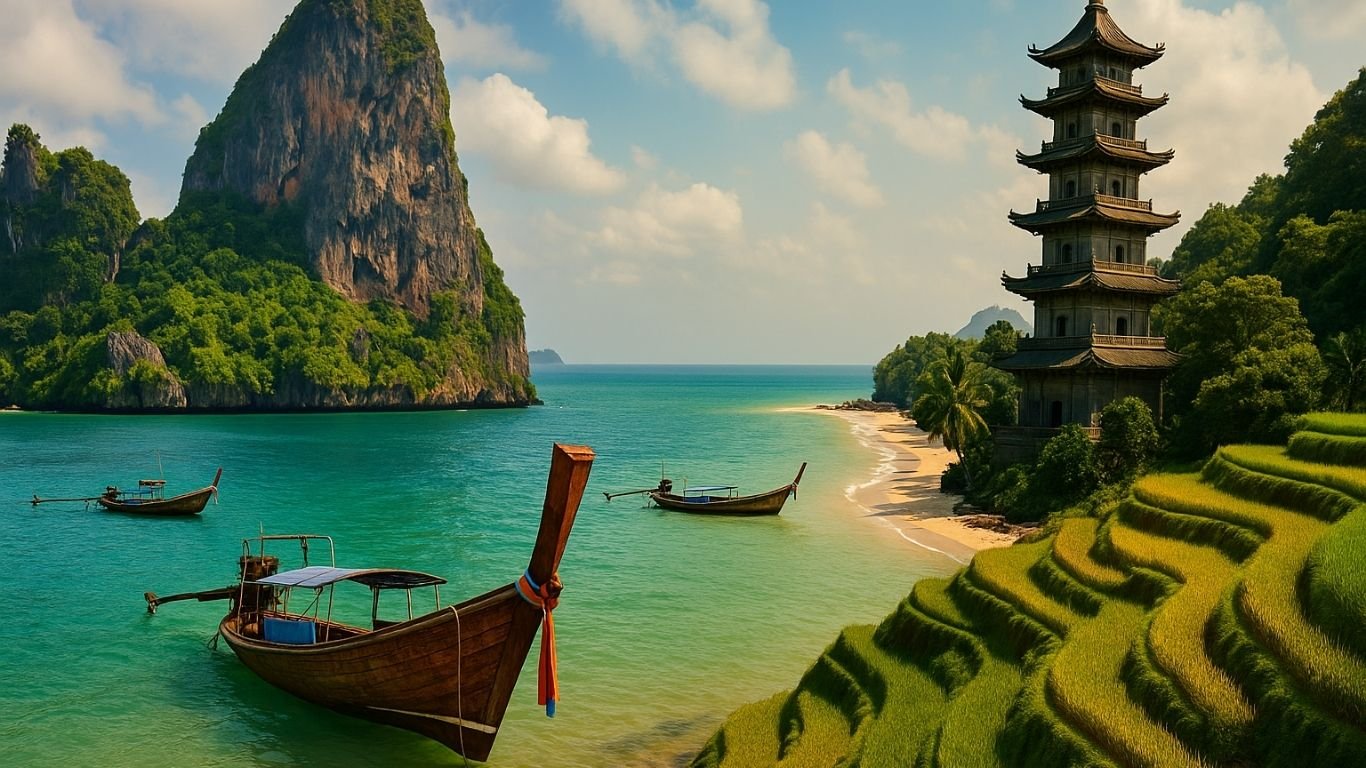Asia—vast, diverse, and endlessly captivating—remains a dreamscape for many travelers. From iconic metropolises like Tokyo and Bangkok to bucket-list wonders like the Taj Mahal and Mount Fuji, it’s easy to get swept up in the continent’s headline attractions. But the true magic of Asia often lies off the beaten path—in places that rarely make it into glossy brochures or guidebook covers.
These underrated travel destinations in Asia are the quiet rebels of the travel world. They challenge expectations and reward the curious. They offer serenity without the swarm, culture without the crowd, and nature in its most unspoiled form. Whether it’s a pristine island in the Philippines or a mist-veiled tea mountain in Taiwan, these gems redefine what it means to “get away.”
This guide isn’t about places you’ve already seen on Instagram a hundred times. It’s about discovering the mind-blowing—the places that make you pause, breathe deeper, and feel like you’ve stumbled into a secret. Expect lush rice terraces, hill tribe traditions, ancient temples, and culinary awakenings. Expect real adventure. Expect awe.
Let’s take a journey through ten destinations that remain under most travelers’ radar but promise unforgettable experiences for those who choose to explore beyond the familiar.
Table of Contents
1. Siargao, Philippines: The Surfer’s Paradise Beyond the Waves
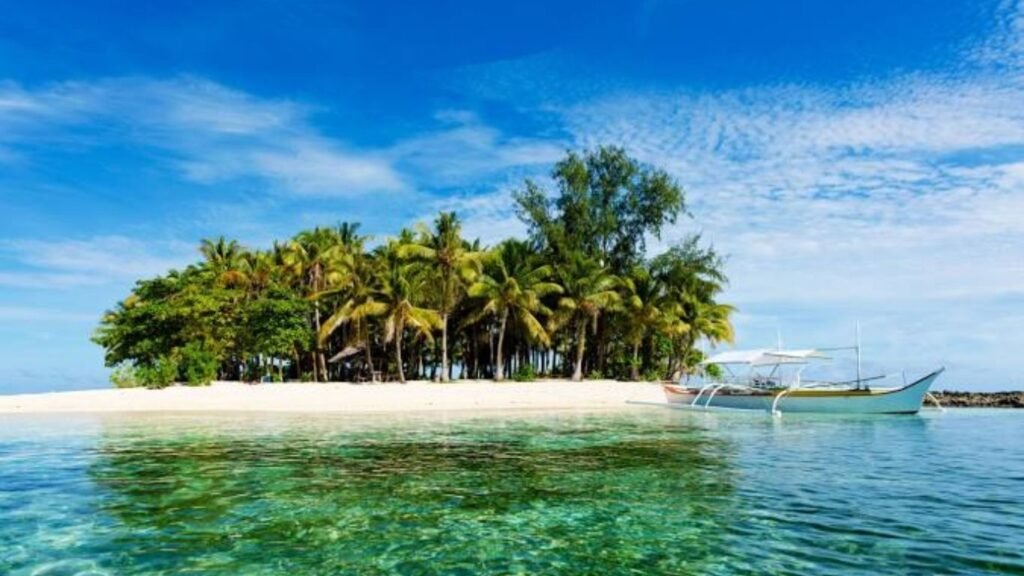
Why Siargao is Underrated
While Bali and Phuket often steal the spotlight, Siargao quietly thrives on its own terms. Tucked in the southeastern part of the Philippines, this teardrop-shaped island is best known as the country’s surfing capital. But to call it just a surfer’s retreat is to sell it short. Siargao is one of the most underrated travel destinations in Asia, blending raw natural beauty with authentic local life.
Unlike other resort-laden islands, Siargao has resisted the tide of overdevelopment. Dirt roads still lead to hidden lagoons, palm forests stretch endlessly inland, and sunsets are best watched from a hammock strung between coconut trees. What makes it special is its balance—between adventure and tranquility, between modern appeal and timeless simplicity.
Must-Do Experiences in Siargao
- Cloud 9 Surf Break: Even if you’re not a surfer, watching the pros ride the legendary Cloud 9 waves is mesmerizing. For beginners, surf schools abound along General Luna beach.
- Sugba Lagoon: A 30-minute boat ride away, this aquamarine oasis is perfect for paddleboarding and cliff-jumping. It’s often less crowded than more famous Philippine lagoons.
- Magpupungko Rock Pools: Visit during low tide to swim in crystal-clear tidal pools framed by limestone boulders. The natural setting feels untouched and surreal.
- Island Hopping: Explore nearby islets like Naked Island, Daku Island, and Guyam Island. Each offers its own charm, from blinding white sands to perfect snorkeling spots.
- Sohoton Cove National Park: Venture farther to Bucas Grande Island for stingless jellyfish lakes, enchanting caves, and eerie turquoise waters—an otherworldly experience.
Travel Tips for Siargao
- Best Time to Visit: March to October, with peak surfing season in September. Avoid the rainy months of November through February if you’re not chasing swells.
- Getting There: Flights to Siargao’s Sayak Airport are available from Manila and Cebu. Book early—slots fill up fast, especially during holidays.
- Where to Stay: From boho beach hostels to luxurious boutique villas, General Luna is the heart of the island’s hospitality scene.
- Local Etiquette: Respect the environment. Avoid plastic, support local businesses, and be mindful in more remote areas—many locals rely on fishing and farming for their livelihood.
- Connectivity: Siargao is a place to disconnect. Mobile data can be patchy, especially outside General Luna—use it as an invitation to slow down.
2. Luang Prabang, Laos: Tranquility and Temples
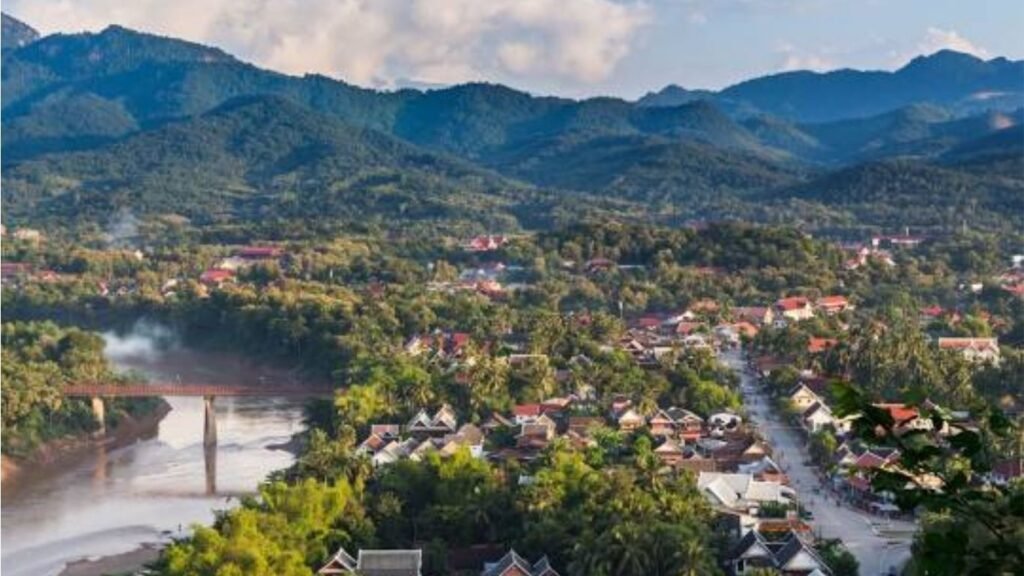
Unveiling the Charm of Luang Prabang
In the shadow of more visited Southeast Asian cities, Luang Prabang exudes a quiet elegance that is both rare and magnetic. A UNESCO World Heritage Site tucked between the Mekong and Nam Khan rivers, this former royal capital of Laos is among the most underrated travel destinations in Asia. With its fusion of French colonial charm and Buddhist spirituality, it creates an atmosphere that feels gently suspended in time.
Wander its saffron-streaked streets at dawn, and you’ll witness barefoot monks collecting alms in a ritual that dates back centuries. Meander through vibrant morning markets filled with jungle herbs, sticky rice, and handcrafted textiles. Here, culture doesn’t shout—it whispers, inviting you into its rhythm.
Spiritual and Cultural Highlights
- Alms Giving Ceremony (Tak Bat): Rise early to observe or respectfully participate in this daily spiritual offering. It’s not a show for tourists—it’s a sacred Lao tradition.
- Wat Xieng Thong: The city’s most exquisite temple, adorned with gold stencils and mosaics, dating back to the 16th century. It reflects the soul of traditional Lao architecture.
- Royal Palace Museum: Step inside the former residence of the Lao monarchy. The museum provides a nuanced look at the country’s recent history and cultural evolution.
- UXO Laos Visitor Center: A sobering yet essential stop. Learn about Laos’ unexploded ordnance crisis—part of the country’s hidden struggles often missed in mainstream narratives.
Experiencing the Natural Beauty
- Kuang Si Falls: A short drive from town, these tiered turquoise waterfalls offer natural swimming pools, forest trails, and a nearby bear sanctuary. It’s one of the most photogenic natural spots in Laos.
- Mount Phousi: Hike up this central hill at sunset for panoramic views over the town and rivers. The climb is moderate, but the reward is unforgettable.
- Mekong River Cruises: Take a long-tail boat to the Pak Ou Caves, where hundreds of Buddha statues rest in limestone caverns carved by time and faith.
Travel Tips for Luang Prabang
- Best Time to Visit: November to March brings dry, pleasant weather. April sees the Lao New Year—expect water fights and celebration.
- Getting There: Accessible via Luang Prabang International Airport with regional flights from Bangkok, Hanoi, and Siem Reap.
- Where to Stay: Boutique guesthouses along the river blend colonial elegance with traditional Lao design. Many include bicycles—perfect for exploring.
- Etiquette Tips: Dress modestly, especially when visiting temples. Lao people are incredibly warm but value humility and quietness.
Luang Prabang doesn’t beg for your attention. It earns it through grace, authenticity, and stillness—a rarity in today’s travel rush. For those seeking peace woven with culture, this is a destination that lingers long after you’ve left.
3. Koh Rong, Cambodia: Pristine Beaches and Untouched Nature
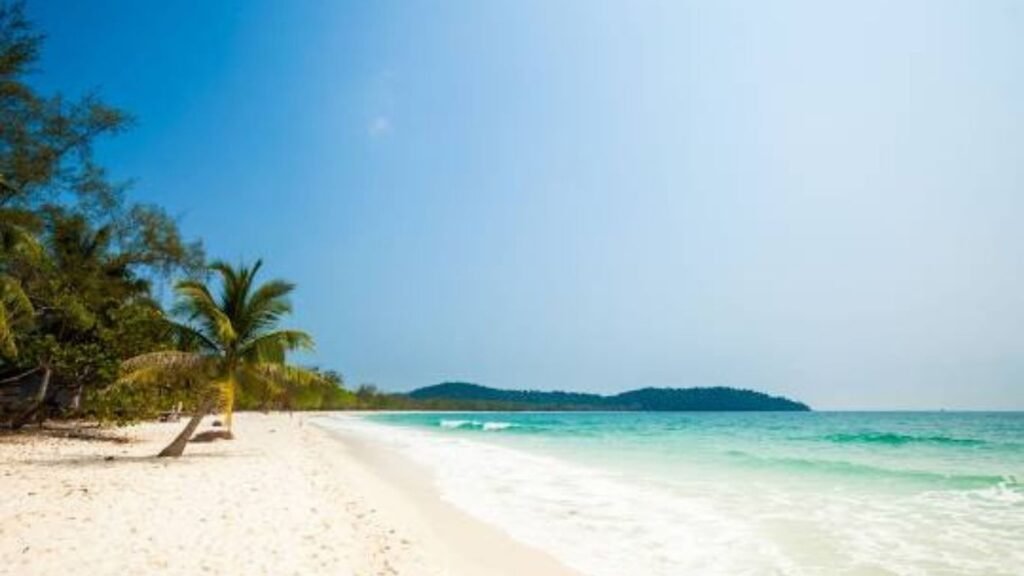
Discovering Koh Rong’s Appeal
Off the southern coast of Cambodia lies Koh Rong, a rugged island jewel that feels like it belongs in a different era—before mass tourism, beach clubs, and resort sprawl. While Cambodia’s Angkor temples receive global acclaim, Koh Rong remains one of the underrated travel destinations in Asia, known more to backpackers and insiders than to mainstream travelers.
The island is a striking contrast to its Thai counterparts. Instead of polished resorts and party culture, you get rustic bungalows, bioluminescent waters, and dense jungle trails. The island doesn’t pretend—it simply is. And that unpolished authenticity is what makes it so irresistible.
Activities and Attractions on the Island
- Long Set Beach (4K Beach): A postcard-perfect strip of white sand, this beach is ideal for those who seek calm and solitude. Its name is misleading—it’s closer to 7 kilometers of powdery shore.
- Snorkeling and Diving: Koh Rong’s coral reefs, while not as famous as Raja Ampat or the Maldives, still boast vibrant marine life, particularly around Koh Toch and Lonely Beach.
- Bioluminescent Plankton: On moonless nights, the shoreline comes alive with glowing plankton. You don’t need a tour—just wade into the dark water and swirl your hands.
- High Point Adventure Park: For a splash of adrenaline, this zipline park nestled in the treetops offers a unique view of the island’s canopy and coastline.
- Jungle Trekking: With most of the island still covered in dense forest, guided treks let you explore its rugged terrain and discover waterfalls and hidden coves.
Planning Your Trip to Koh Rong
- Best Time to Visit: November through May marks the dry season—ideal for beach days and water clarity. June to October brings heavier rains and fewer tourists.
- How to Get There: Ferries run from Sihanoukville to Koh Rong multiple times daily. The ride takes about 45 minutes to an hour depending on weather and boat type.
- Where to Stay: For tranquility, head to Long Set Beach or Coconut Beach. If you want a touch of nightlife and budget options, Koh Toch Village is the livelier base.
- Connectivity and Cash: Wi-Fi is limited and power outages are common—perfect for digital detoxers. Bring cash, as ATMs are not available on the island.
- Sustainability Tip: The island struggles with waste management. Bring reusable water bottles and avoid single-use plastics to help preserve its beauty.
In a region bursting with tropical destinations, Koh Rong feels raw, wild, and refreshingly real. It’s the perfect escape for those who crave more beach and less buzz—one of those underrated travel destinations in Asia that rewards stillness and spontaneity alike.
4. Mawlynnong, India: Asia’s Cleanest Village and Living Root Bridges
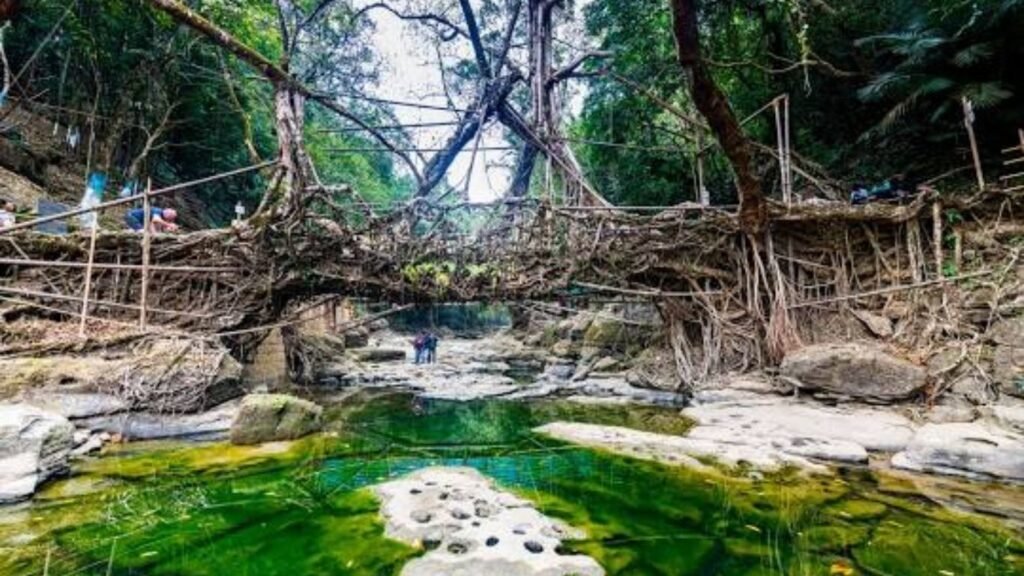
The Unique Appeal of Mawlynnong
In India’s far northeast, where the borders of Bangladesh and Meghalaya blur into misty hills, lies a village unlike any other—Mawlynnong. Named “Asia’s cleanest village” by travel media and NGOs alike, this humble hamlet is a quiet marvel. It doesn’t shout for attention, yet stands as one of the most underrated travel destinations in Asia, captivating those who venture off the tourist map.
Here, every path is swept, every flowerbed nurtured, and every bamboo bin well-used. Cleanliness isn’t enforced—it’s inherited. It’s part of the Khasi identity, a matrilineal tribe whose sustainable living practices have long predated any global eco-tourism trends.
But Mawlynnong is more than its tidiness—it’s a gateway to living root bridges, sacred groves, and a culture that honors both nature and community.
Exploring the Natural Wonders
- Living Root Bridges: Near the village lies Riwai, home to one of the region’s accessible root bridges. These natural wonders are formed by guiding the roots of rubber fig trees across streams over decades—a triumph of patience and eco-architecture.
- Sky View Tower: A bamboo tower offers panoramic views of the surrounding forest and even into Bangladesh on a clear day. Built entirely by locals, it’s both a viewpoint and a testament to indigenous craftsmanship.
- Waterfalls and Caves: While less commercialized than other parts of Meghalaya, the region boasts nearby waterfalls and limestone caves worth exploring with local guides.
- Sacred Forests: Sacred groves in nearby Mawphlang are protected by tribal customs. Entry is permitted, but nothing—not even a leaf—may be taken out. These forests are biodiversity hotspots and spiritual sanctuaries.
Cultural Insights into the Khasi Tribe
- Matrilineal Society: In Khasi culture, lineage and inheritance pass through the female line. Women own property, children take their mother’s surname, and youngest daughters inherit the family home.
- Community First: The village runs on a sense of collective responsibility. Cleanliness is taught to children as a value, not a rule. Guests are welcomed but expected to respect these standards.
- Sustainable Living: Bamboo is used for nearly everything—fencing, flooring, furniture, and even dustbins. Homes are modest but meticulously maintained.
Travel Tips for Mawlynnong
- Best Time to Visit: March to October offers pleasant weather and lush green surroundings. The monsoon months (June–August) intensify the region’s natural beauty, but roads can be slippery.
- Getting There: Drive from Shillong (about 3 hours) or from Cherrapunji (1.5 hours). Hiring a local taxi or joining a guided tour is recommended due to hilly terrain and limited public transport.
- Stay Options: Homestays are the norm here—clean, cozy, and culturally immersive. Don’t expect luxury—expect warmth.
- Respectful Tourism: Ask before taking photos of people or their homes. Dress modestly and follow village customs.
Mawlynnong is a rare fusion of simplicity and sophistication—a village where modern travelers can learn from ancient wisdom. It’s not just clean—it’s conscious. And it stands proudly among the underrated travel destinations in Asia that truly leave a mark.
5. Alishan National Forest, Taiwan: Misty Mountains and Tea Plantations
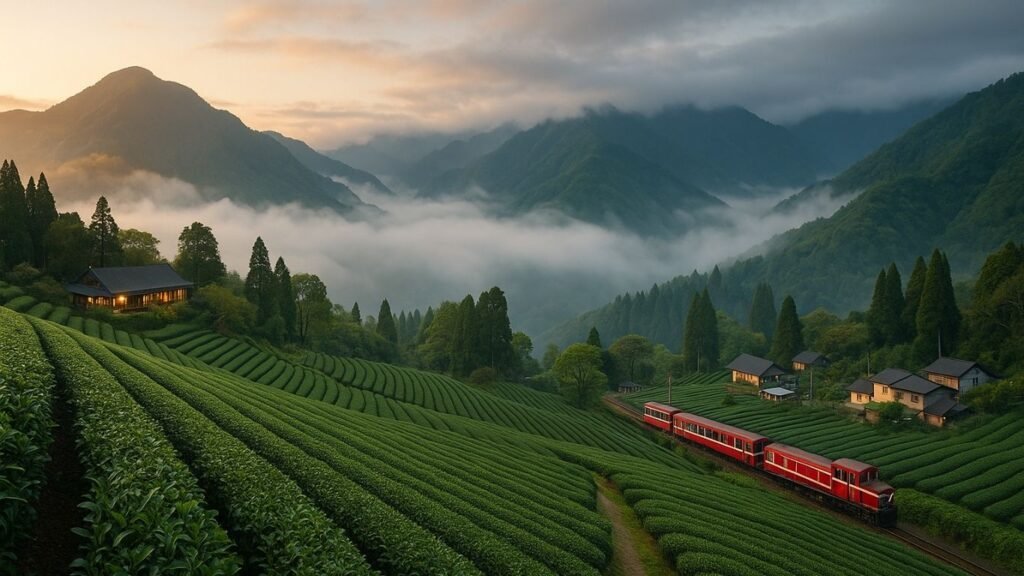
The Scenic Beauty of Alishan
Alishan is more than just a national forest—it’s a place where time stretches, mists dance between cypress trees, and the scent of high-mountain oolong tea hangs in the air. Tucked in the central mountains of Taiwan, this alpine sanctuary is beloved by locals yet astonishingly underappreciated by international travelers. Among the most serene and underrated travel destinations in Asia, Alishan offers an enchanting mix of natural grandeur and cultural reverence.
The forest reserve sits over 2,000 meters above sea level and is a sanctuary for giant red cypress trees, cherry blossoms, and a narrow-gauge train that climbs through clouds. It’s a dreamland for those who cherish slow, scenic travel and poetic landscapes.
Key Attractions and Activities
- Alishan Forest Railway: Originally built by the Japanese during their colonial period for logging, this heritage train now takes visitors on a nostalgic journey through tunnels, dense forest, and up into the misty highlands. The sunrise ride to Zhushan Station is iconic.
- Sunrise at Mount Ogasawara (Zhu Mountain): Wake up before dawn, ride the train or hike to the summit, and witness the sun emerging over seas of clouds—a signature Alishan moment.
- Sacred Tree Trail: Walk through a forest of towering trees, some more than 2,000 years old. The ancient sacred cypress, though damaged, still stands as a revered symbol.
- Sister Ponds and Shouzhen Temple: These tranquil landmarks blend mythology with nature. Legend and spirituality seep into every stone and ripple.
- Cherry Blossom Season: From March to April, cherry trees light up the forest in a pink spectacle, rivaling Japan’s better-known hanami scenes.
Best Time to Visit Alishan
- Spring (March–May): For cherry blossoms, fresh mountain air, and cooler hiking temperatures.
- Autumn (October–November): When maple leaves burn crimson across the trails, adding dramatic color to the scenery.
- Winter: Rare snowfall dusts the treetops and temples, creating a magical, hushed environment—perfect for quiet reflection.
Avoid peak holidays, especially around Lunar New Year, when crowds spike and accommodation becomes scarce.
Planning Your Visit
- Getting There: The most scenic route is via the Alishan Forest Railway from Chiayi City. Alternatively, buses connect from major cities like Taichung and Tainan.
- Where to Stay: Alishan House is a historic hotel within the park, but you’ll also find charming guesthouses in nearby villages like Fenqihu and Shizhuo—both immersed in nature and tea culture.
- What to Eat: Try railway lunchboxes, bamboo rice, and freshly brewed high-mountain oolong tea, grown in nearby plantations.
- Insider Tip: Visit a tea farm in Shizhuo. Many local growers offer tastings and explain the delicate process behind Taiwan’s famed oolong.
Alishan is where nature whispers and stories linger in the fog. It’s a living canvas of color, aroma, and spirit—a place that calls to the romantic in every traveler. Without question, it belongs on the list of underrated travel destinations in Asia, especially for those seeking solitude, beauty, and timeless charm.
6. Ipoh, Malaysia: A Culinary and Cultural Gem
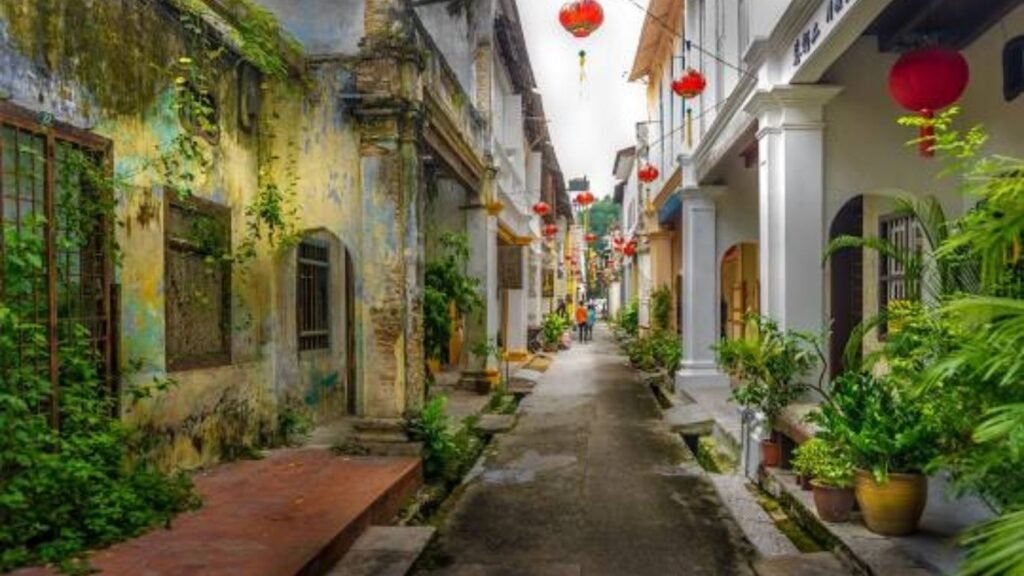
Why Ipoh Deserves More Attention
Kuala Lumpur dazzles, Penang feeds, and Langkawi soothes—but nestled quietly between them lies Ipoh, a city with just as much soul and arguably more character. Once a tin mining hub during the British colonial era, Ipoh has reemerged as one of the most underrated travel destinations in Asia, blending nostalgic charm with modern creativity.
What sets Ipoh apart is its effortless fusion of heritage, artistry, and culinary excellence. It doesn’t shout for visitors. It simply wins them over—through mural-covered alleyways, limestone cave temples, and dishes that rival Malaysia’s food capitals.
Foodie Adventures in Ipoh
- Ipoh White Coffee: Smooth, creamy, and slightly caramelized, this local brew is the soul of the city’s kopitiam (coffee shop) culture. Start your day at Sin Yoon Loong or Nam Heong for the most authentic sip.
- Bean Sprout Chicken (Nga Choy Kai): Tender poached chicken served with crunchy bean sprouts and soy sauce—simple, local, and unforgettable.
- Salted Chicken (Yim Kok Kai): Baked in paper and rock salt, this aromatic Hakka dish is a staple of old-town eateries.
- Dim Sum Delights: The city rivals Hong Kong in dim sum variety, with decades-old institutions serving bamboo baskets of piping hot dumplings.
- Street Snacks: From kaya toast to chee cheong fun (rice noodle rolls), Ipoh’s food culture thrives in street stalls and humble shops rather than fancy restaurants.
Exploring the Heritage and Nature
- Ipoh Old Town: Colonial buildings, antique shops, and hidden cafes await along its narrow streets. Don’t miss the famous wall murals by Lithuanian artist Ernest Zacharevic, which turned Ipoh into a street art destination.
- Kek Lok Tong Cave Temple: One of the most impressive cave temples in Asia, set inside a massive limestone cavern surrounded by tranquil gardens.
- Gua Tempurung: For the adventurous, this limestone cave system stretches over 4 kilometers and offers guided tours ranging from dry walks to wet crawls through underground streams.
- Concubine Lane: Once a red-light district, now a bustling street market with artisanal goods, quirky souvenirs, and food stalls. A great place for photos and people-watching.
- Han Chin Pet Soo Museum: Housed in a restored clubhouse, this museum tells the story of Ipoh’s tin mining boom and its secretive Chinese societies.
Travel Tips for Ipoh
- Best Time to Visit: November to March is cooler and less humid. Weekends can get busy with domestic travelers, so weekdays offer a more relaxed vibe.
- Getting There: Ipoh is easily accessible by train or car from Kuala Lumpur (about 2.5 hours). The Electric Train Service (ETS) is clean, quick, and scenic.
- Where to Stay: Boutique hotels like Sekeping Kong Heng and Bedrock Hotel offer charm, history, and walkable access to Old Town.
- Local Etiquette: Ipoh is conservative compared to KL or Penang. Dress modestly, especially when visiting temples or local homes.
Ipoh is a city of layers—each walk down its lanes peels back a bit more of its story. It satisfies the foodie, the historian, the artist, and the dreamer. And yet, it remains blissfully under-the-radar. For travelers hungry for authenticity and elegance without crowds, Ipoh is a hidden jewel among underrated travel destinations in Asia.
7. Ella, Sri Lanka: Lush Landscapes and Scenic Train Rides

The Beauty of the Hill Country
If there’s a single moment that defines travel in Sri Lanka, it might be the train ride into Ella—windows wide open, wind in your face, and rolling hills unfurling into tea-covered slopes. Nestled in the island’s central highlands, Ella is one of those rare places where the journey is just as extraordinary as the destination. Though overshadowed by the likes of Colombo or Galle, Ella has quietly emerged as one of the most evocative and underrated travel destinations in Asia.
Ella is where mist lingers over emerald plantations and time slows just enough for a second cup of Ceylon tea. The charm lies not just in its stunning landscapes but in its laid-back energy, its friendly locals, and the promise of slow, scenic adventure.
Iconic Landmarks and Activities
- Nine Arches Bridge: This postcard-perfect railway bridge, surrounded by forest and tea, is best viewed as the morning train glides across its graceful arches. Arrive early for photos before the crowds roll in.
- Little Adam’s Peak: A gentle hike with breathtaking panoramic views of the Ella Gap. It’s a favorite for sunrise or golden-hour photographers.
- Ella Rock: A more challenging trek that rewards with sweeping mountain views and solitude. Hire a local guide to avoid confusing trail markers.
- Ravana Falls: Just a short drive from town, this waterfall is popular with both locals and travelers. In the dry season, you can climb its rocky edges for elevated views.
- Tea Factory Tours: Visit nearby tea estates like Halpewatte or Uva Halpewatte for immersive tours on tea processing—plus tastings of course.
Getting Around Ella
- Scenic Train Ride: The journey from Kandy or Nuwara Eliya to Ella is one of the most stunning train rides in the world. Book second-class reserved seats for the best open-window experience.
- Tuk-tuks and Scooters: Affordable and convenient for getting to nearby trailheads, viewpoints, and remote plantations. Most guesthouses can arrange drivers.
- On Foot: Ella’s compact layout and cooler hill-country air make walking a pleasure. Trails often start right from your accommodation’s doorstep.
- Staying Connected: Wi-Fi is available in most guesthouses and cafes, though don’t expect blazing speeds. Embrace the digital detox—Ella invites you to disconnect.
When to Visit Ella
- Best Season: January through March brings warm, dry weather and excellent visibility for hikes. Avoid the southwestern monsoon months (May–September) for clearer skies.
- Where to Stay: Choose hillside eco-lodges or family-run homestays with terraces facing the valley. The views alone are worth the trip.
Ella is proof that natural beauty and authenticity don’t require luxury. It’s a place to breathe, to wander, and to fall in love with the simplicity of travel. Among the underrated travel destinations in Asia, it’s one of the most soul-soothing and photogenic you’ll ever find.
8. Sapa, Vietnam: Stunning Rice Terraces and Hill Tribe Culture
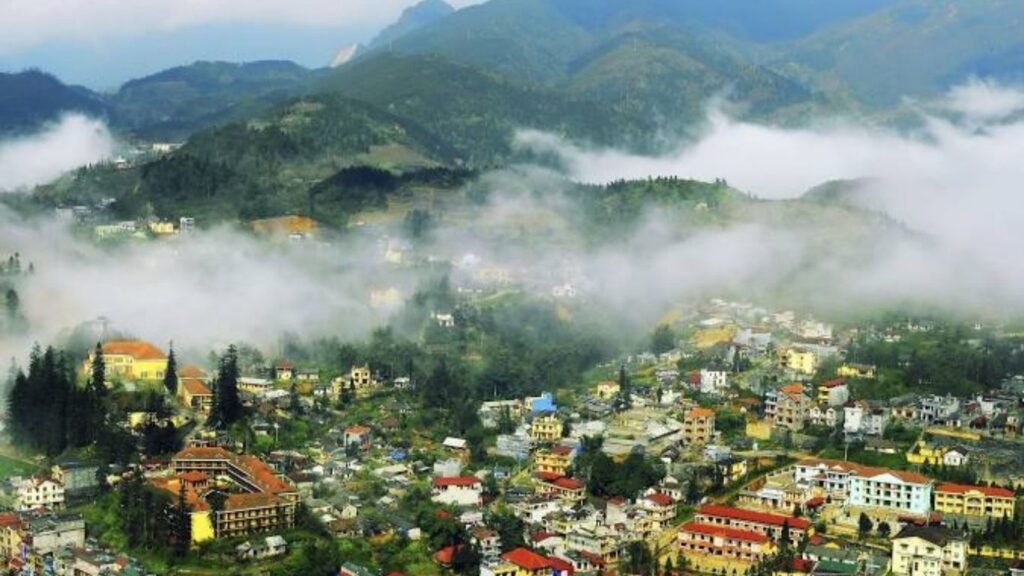
Discovering the Magic of Sapa
Tucked into the misty mountains of northern Vietnam, near the Chinese border, lies Sapa—a highland sanctuary that feels suspended between earth and sky. With its sculpted rice terraces, ethnic diversity, and ethereal landscapes, Sapa has earned quiet acclaim among seasoned travelers. Yet it remains one of the most underrated travel destinations in Asia, offering a cultural richness and natural grandeur that few places can match.
Unlike the chaotic buzz of Hanoi or the tourist-packed beaches of Da Nang, Sapa moves at its own rhythm. Here, fog rolls over valley floors like slow breath, water buffalo graze near hilltop huts, and colorful markets pulse with the energy of Vietnam’s ethnic minorities.
Trekking and Cultural Encounters
- Muong Hoa Valley: This is Sapa’s crown jewel—a stretch of sculpted rice terraces layered like green stairways into the clouds. Trekking here means passing through villages like Lao Chai and Ta Van, each offering insights into local life.
- Homestay Experiences: Spend a night in a Hmong or Dao household. Meals are shared, stories exchanged, and you’ll gain a deeper understanding of highland traditions that textbooks can’t offer.
- Fansipan Mountain: Dubbed the “Roof of Indochina,” this is the highest peak in Vietnam. You can hike the trail (challenging!) or ride the world’s longest three-rope cable car for sweeping views.
- Bac Ha Market (Sundays): Less touristy than Sapa’s town market, Bac Ha is a riot of color and commerce. Locals come from far-flung villages to trade textiles, livestock, and herbal remedies.
- Sapa Town: While increasingly developed, the town still retains a mountain-town charm—especially in early mornings when fog cloaks the streets and vendors set up for the day.
Tips for Visiting Sapa
- Best Time to Visit: For rice terrace views, aim for May (planting season) or September (harvest season). Winter months (December–February) can bring snow and frost—a different kind of magic.
- Getting There: Overnight trains from Hanoi to Lao Cai are the most scenic. From Lao Cai, it’s a 45-minute ride up winding roads to Sapa town.
- What to Pack: Layers. Weather in the mountains changes quickly—from blazing sun to sudden mist. Waterproof shoes and a light jacket are essentials.
- Ethical Travel: Support local guides and homestays, and avoid tours that exploit minority communities. Always ask before photographing locals.
Sapa is the Vietnam that postcards rarely show—the one with ancient footpaths, woven traditions, and views that make you pause. As one of the most underrated travel destinations in Asia, it delivers an immersive experience where culture, community, and nature intersect beautifully.
9. Raja Ampat, Indonesia: Underwater Paradise and Island Hopping

The Untouched Beauty of Raja Ampat
In the far-flung province of West Papua, where Indonesia dissolves into the Pacific, lies an archipelago of staggering beauty—Raja Ampat. Meaning “Four Kings,” this collection of over 1,500 jungle-draped islands is as remote as it is majestic. Despite being a dream for divers and marine biologists, it remains one of the most underrated travel destinations in Asia for mainstream adventurers.
Raja Ampat’s appeal is elemental—here, the world still feels new. Beneath the surface lies the richest marine biodiversity on Earth, and above, limestone karsts pierce turquoise waters, creating landscapes that seem born of fantasy. There are no massive resorts or tourist traps—just nature, in its rawest, most astonishing form.
Diving and Snorkeling Hotspots
- Cape Kri: Known as one of the best dive sites in the world, Cape Kri holds the record for the most species spotted in a single dive—over 370. Expect manta rays, reef sharks, barracuda, and a kaleidoscope of coral.
- Misool: A private marine reserve and eco-lodge haven, Misool offers untouched reefs and lagoon dives teeming with color and life. The area’s conservation efforts are world-class.
- Blue Magic and Sardine Reef: Don’t let the names fool you—these are advanced sites with fast currents and big pelagics. Experienced divers will be in awe.
- Shallow Reef Snorkeling: Even non-divers can marvel at Raja Ampat’s underwater world. Shallow reefs offer encounters with sea turtles, lionfish, and endless schools of tropical fish.
Planning Your Trip to This Archipelago
- Getting There: It’s not easy—fly to Sorong from Jakarta or Bali, then take a ferry to Waisai. The remoteness keeps the crowds away and the reefs pristine.
- When to Visit: October to April is the diving season, with calmer seas and better visibility. Avoid the monsoon months for smoother inter-island travel.
- Where to Stay: Eco-resorts and homestays dominate. Look into places like Papua Paradise, Kri Eco Resort, or a local homestay in Arborek Village for a more authentic experience.
- Travel Considerations: Limited ATMs, no mobile signal on many islands, and sustainability is a must. Bring reef-safe sunscreen, reusable gear, and minimize waste at all costs.
- Island Hopping Musts: Visit Piaynemo Viewpoint for an iconic panorama, Arborek Island for culture and community, and Wayag for jaw-dropping seascapes and snorkeling.
Raja Ampat is not for the casual traveler—it’s for those who seek untouched wonder. With every dive, paddle, and hike, you realize just how rare this place is. Among the most underrated travel destinations in Asia, it is perhaps the most visually and ecologically jaw-dropping of them all.
10. Takayama, Japan: Old-World Charm in the Japanese Alps
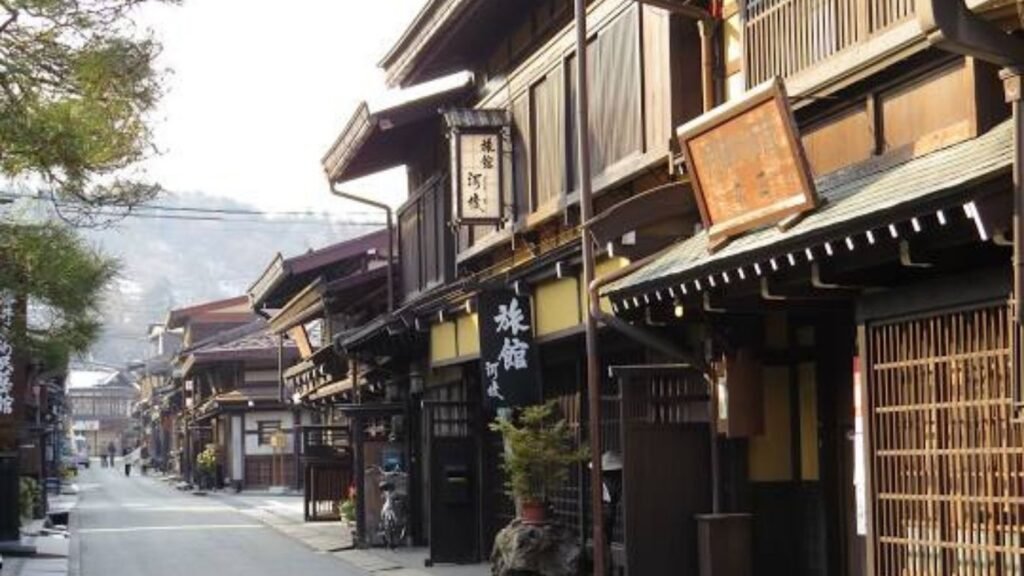
Exploring Takayama’s Historic Streets
Nestled high in the Japanese Alps, Takayama feels like a portal to another era. While Tokyo dazzles with neon and Kyoto draws global acclaim for its temples, Takayama remains an intimate, lesser-known treasure. As one of the most underrated travel destinations in Asia, it’s the kind of place where old Japan isn’t just preserved—it’s lived.
The city’s beautifully maintained Edo-period streets are lined with merchant homes, sake breweries, and artisan shops that echo centuries of craftsmanship. The air is crisp, the hospitality genuine, and the mountains form a majestic backdrop to daily life.
Cultural Experiences and Festivals
- Sanmachi Suji District: The historic heart of Takayama, these narrow streets are lined with wooden facades, traditional storefronts, and family-run sake breweries offering free tastings.
- Takayama Jinya: A former government office from the Edo period, now a museum that gives insight into feudal administration and rural governance.
- Morning Markets: Held daily along the Miyagawa River and at Jinya-mae, these markets sell everything from mountain vegetables to handmade crafts. A perfect way to meet locals and sample fresh snacks.
- Hida Folk Village (Hida no Sato): An open-air museum showcasing traditional thatched-roof farmhouses from the region, complete with exhibits on rural life and seasonal festivals.
- Takayama Matsuri: Held in spring and autumn, this is one of Japan’s top festivals. Ornate floats, traditional music, and ceremonial processions transform the town into a living theater of heritage.
Day Trips from Takayama
- Shirakawa-go: A UNESCO-listed village famed for its gassho-zukuri architecture—steep, thatched roofs designed to withstand heavy snow. It’s stunning in every season, particularly winter.
- Okuhida Onsen Villages: A short drive from Takayama, these hot spring towns offer serene outdoor baths with mountain views—an essential Japanese experience.
- Kamikochi Valley: A paradise for hikers and photographers, this alpine valley features crystal-clear rivers, suspension bridges, and panoramic trails.
- Hida Furukawa: A quieter cousin to Takayama, known for its traditional canal-lined streets and annual drum festival. It’s a hidden cultural trove.
Why Visit Takayama?
- Best Time to Visit: Spring (April–May) and autumn (October–November) offer mild weather and vibrant colors. Winter brings a snowy fairy-tale aesthetic without the tourist rush of Hokkaido.
- Getting There: Reach Takayama by train from Nagoya or Tokyo (via Shinkansen to Toyama, then the scenic Hida Limited Express). The journey is as beautiful as the destination.
- Where to Stay: Traditional ryokan inns with tatami mats and onsen baths provide a true Japanese hospitality experience. Many include kaiseki (multi-course) dinners.
- Dining Delights: Don’t miss Hida beef—a regional rival to Kobe. Enjoy it grilled, in sushi, or in a steaming hotpot.
Takayama proves that sometimes the most extraordinary places are the quietest. It’s a celebration of craft, tradition, and mountainous beauty. For travelers seeking depth, culture, and authenticity, Takayama ranks high among the underrated travel destinations in Asia.
Conclusion
Asia is a continent of contrasts—towering cities, spiritual sanctuaries, pristine beaches, and highland cultures. But beyond the famous landmarks and glossy itineraries lies a deeper kind of travel experience—one shaped by authenticity, intimacy, and discovery. These ten underrated travel destinations in Asia aren’t just beautiful—they’re meaningful.
Each place on this list offers more than what meets the eye. From the sun-drenched beaches of Siargao and Koh Rong to the highland mystique of Sapa and Ella, they invite you to look beyond the brochure. They’re where traditions live on, where nature is still wild, and where tourism hasn’t erased the soul of a place.
For the traveler who values stories over selfies and experiences over checklists, these destinations are more than just alternatives—they’re the main event. Whether you’re seeking a quiet mountain town, an untouched island, or a village with living root bridges, the magic of Asia lies off the radar.
It’s time to go beyond the obvious. The world’s most rewarding journeys start with the roads less traveled—and Asia’s got them in spades.
FAQ: Underrated Travel Destinations in Asia
What makes a destination “underrated”?
An underrated destination is one that offers exceptional cultural, natural, or experiential value but remains relatively unknown or overlooked by the majority of tourists. These places often provide a more authentic and less crowded travel experience.
Are these destinations suitable for first-time travelers to Asia?
Absolutely. While some places like Raja Ampat or Sapa require more planning or physical effort, others like Ipoh, Luang Prabang, or Takayama are perfect for those seeking cultural immersion without overwhelming logistics.
Is it more expensive to travel to lesser-known destinations?
Not necessarily. Many underrated travel destinations in Asia are far more affordable than their high-profile counterparts. Places like Ella, Koh Rong, and Mawlynnong offer excellent value, especially for budget-conscious travelers.
Do these destinations have reliable infrastructure for tourists?
Most do, though levels vary. While destinations like Alishan and Takayama offer top-tier infrastructure, places like Raja Ampat and Mawlynnong require a bit more flexibility and preparation. That’s part of their charm—but it also pays to research in advance.
How can I travel responsibly in these off-the-radar places?
Support local businesses, stay in family-run accommodations, minimize waste, and be respectful of local customs and cultures. Sustainable travel is especially important in these areas to preserve their natural and cultural integrity.
If you’re looking for more than just a vacation—if you’re seeking a journey that leaves you with stories, insight, and perspective—these hidden gems across Asia are waiting. These truly are some of the most underrated travel destinations in Asia, and they’re ready to welcome you with open arms and untold wonders.
20 Most Underrated Travel Destinations in Asia – Yahoo Finance